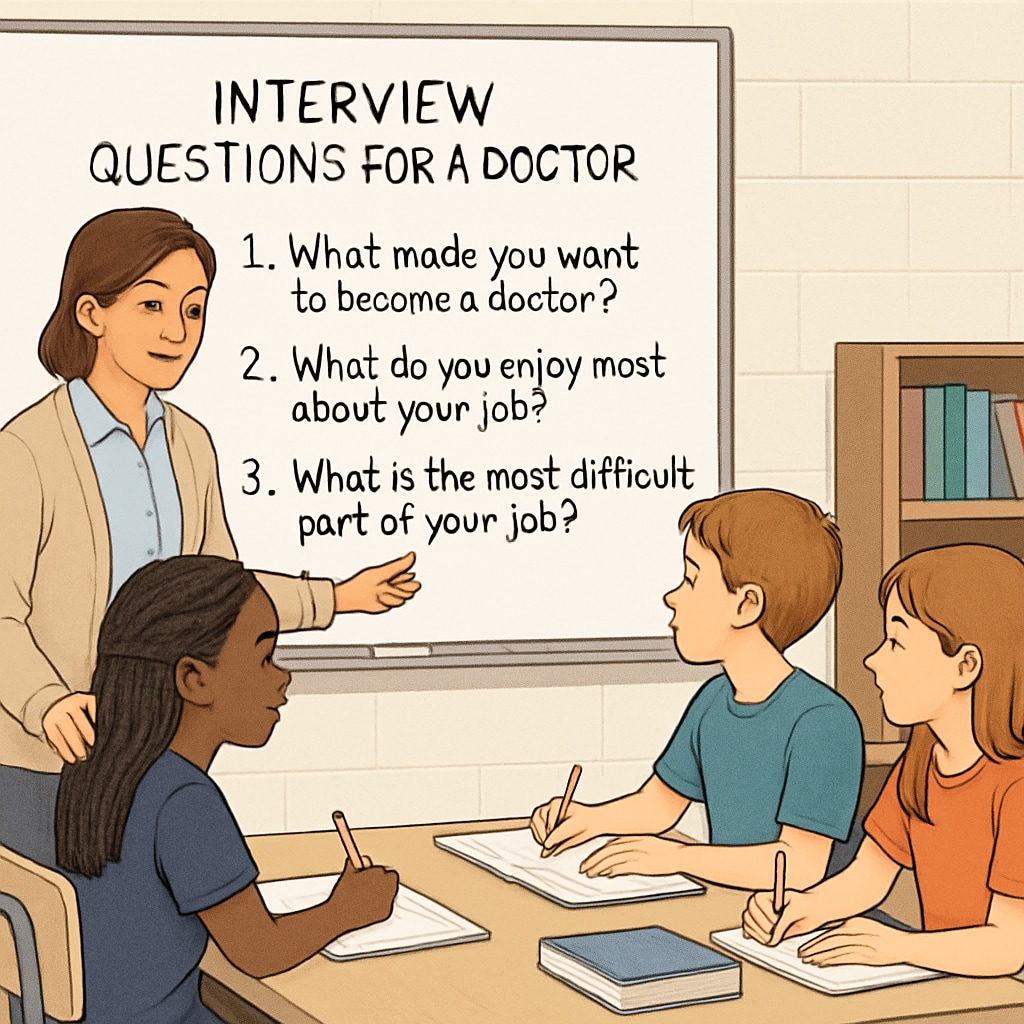The integration of medical career, school projects, and doctor interviews in K12 education provides students with a unique opportunity to explore the field of healthcare. These initiatives not only spark career interest but also enhance decision-making and planning skills. By connecting students with medical professionals, schools can create enriching experiences that build early career awareness and foster professional insights.
Why Include Medical Career Exploration in K12 Education?
Introducing students to medical careers at an early stage has several benefits. It helps them understand the diverse roles within the healthcare industry, from general practitioners to specialists and researchers. It also fosters an appreciation for the responsibilities, challenges, and rewards of medical professions. For students considering a future in medicine, such projects provide a realistic preview of their potential paths.
According to the Bureau of Labor Statistics, healthcare occupations are among the fastest-growing career fields. Offering K12 students access to this world can inspire them to pursue STEM subjects (science, technology, engineering, and mathematics) and develop skills like communication, critical thinking, and empathy.

Designing an Effective Medical Career Interview Project
To create a successful medical career interview project, educators need to follow a structured approach. Below is a step-by-step guide:
- Define Objectives: Identify the purpose of the project, such as increasing awareness about medical professions or helping students make informed career choices.
- Engage Stakeholders: Collaborate with local healthcare providers, hospitals, or medical schools to connect students with professionals.
- Prepare Students: Teach students how to draft thoughtful questions, communicate professionally, and research the medical field in advance.
- Schedule Interviews: Coordinate with medical professionals to arrange virtual or in-person interviews. Ensure flexibility to accommodate busy schedules.
- Reflection and Reporting: Have students summarize their experiences in essays, presentations, or group discussions to encourage deeper learning.
This framework ensures that the project is organized, impactful, and beneficial to all participants. Additionally, integrating real-world career exploration projects aligns with modern education standards, which emphasize experiential learning.
Tips for Engaging with Doctors
When students interact with healthcare professionals, it’s essential to establish a respectful and productive environment. Here are some tips to guide the process:
- Encourage Curiosity: Students should ask open-ended questions, such as “What inspired you to become a doctor?” or “What challenges do you face in your role?”
- Respect Time: Medical professionals often have demanding schedules, so keeping the interviews concise and focused is crucial.
- Build Confidence: Role-play interview scenarios in class to help students feel prepared and confident.
- Follow Up: After the interview, students can send thank-you notes as a gesture of appreciation.

The Long-term Impact of Career Projects
Incorporating medical career projects into K12 education equips students with invaluable skills and insights. These initiatives inspire academic engagement, encourage goal setting, and provide exposure to real-world professional environments. As a result, students are better prepared to make informed decisions about their futures.
For educators, such projects also offer a way to connect curriculum goals with practical applications. By fostering partnerships with healthcare institutions, schools can play a pivotal role in shaping the next generation of medical professionals.
In conclusion, medical career interview projects are a powerful tool for nurturing future healthcare leaders. By providing students with early exposure to the medical field, schools can ignite passion, enhance career readiness, and contribute to a well-informed and motivated workforce.
Readability guidance: This article balances professional insights with accessible language, ensuring it caters to both educators and students. It uses short paragraphs, active voice, and clear transitions to maintain engagement. Lists and examples are included for easy comprehension.


